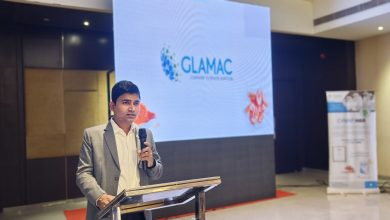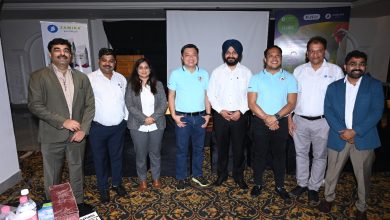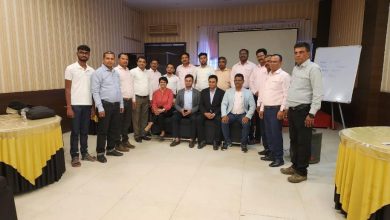PERSPECTIVES : THE GLOBAL MYCOTOXIN THREAT AND WHAT TO BEAR IN MIND
Climate change and ever-changing extreme weather conditions continue to pose threats to feed safety as well as animal performance and health, notably under the form of the omnipresent mycotoxin problem.
Presenting the results of the 2018 BIOMIN Mycotoxin Survey, which involved 18,424 finished feed and raw commodity samples sourced from 79 countries, Alexandro Marchioro, Senior Mycotoxin Expert at BIOMIN warned of the damage caused but also addressed how the issue can be offset by testing and adequate feed management strategies.
“Of the 18,424 samples, a full 67% contained at least one mycotoxin present in sufficient concentrations to pose a risk to animal health or performance,” he commented.
How much would you roughly estimate the financial impact of mycotoxin occurrence on the global livestock industry in 2018?
[Alexandro Marchioro] It is difficult to estimate the financial impact because factors such as weather, raw material quality, the quality of grain transport and storage, etc. influence the extent of mycotoxin occurrence, and these points vary according to geography. However, recently studies in US show that mycotoxins cost the domestic livestock industry USD 1.2 billion each year, affecting all species. You can imagine that a global figure would therefore exceed this amount many times over.
How can the regional differences be explained? Is climate change the main problem?
[Alexandro Marchioro] Climate change is definitely a crucial contributor to mycotoxin production on the field. As we showed in one example during our recent webinar, the situation in Argentina in the last two years demonstrates how climate changes can contribute to mycotoxin production. In that case, flooding in 2017 and drought in 2018 both drove mycotoxin occurrence levels higher, especially fumonisins and deoxynivalenol.
Asia was seen to be in an “extreme risk” situation in 2018. What are you telling your concerned Asian customers at the moment?
[Alexandro Marchioro] In general Asia has seen a high risk level in 2018. In contrast to other regions, there were other concerns aside from FUM and DON. Aflatoxin was present in 44% of all samples tested in the region. This mix of mycotoxins can definitely impact the animal production, especially swine production. Additionally, we know that if these mycotoxins are present, they can open the door to several diseases. This is particularly true of the most sensitive phases, like reproduction and starters. We encourage our customers to implement robust mycotoxin risk management which includes regular testing of feed materials and the application of a safe and proven mycotoxin deactivator.
Are there specific geographical markets that are just not receptive to your warning signals or the impact of the survey? Why is it necessary to continue reminding the animal nutrition sector to regularly test feed ingredients and adopt a robust mycotoxin risk management program when the animal nutrition sector “already know the drill”?
[Alexandro Marchioro] The vast majority of clients recognize the value of understanding the mycotoxin risk in their feed. In fact, the thousands of samples analyzed each year are supplied by BIOMIN customers from across the globe as part of a service that helps them to identify the specific risks they face on their farms. We are able to use the most advanced mycotoxin detection technologies available by working with sister company Romer Labs—which highlights the fact that mycotoxins are a field of expertise for not just BIOMIN but also the Erber Group, of which both companies are a part.
It’s important to keep in mind that the field of mycotoxin research only really began in the 1960s. In the early days, aflatoxins received the most attention and there was little concern given to other mycotoxins. However, official bodies have recently brought new information to the forefront, for example in 2017 when the European Food Safety Authority (EFSA) underscored the potential harm of deoxynivalenol metabolites.
We already know that Fusarium mycotoxins can impair feed quality. In addition, considerable research and articles were published in the last years showing the impact of mycotoxins as fumonisins (FUM) and deoxynivalenol) DON on the gastrointestinal tract and immune system. The co-occurrence of these mycotoxins can reduce the animal performance and profitability.
During the webinar you argued that the co-contamination of mycotoxins is a considerable point we should bear in mind. Can you expand on that comment?
[Alexandro Marchioro] In the past, studies focused on the harm of single mycotoxins. However, the realistic field situation typically involves multiple mycotoxins. We detected in our survey an excessive co-contamination level. 70% of all samples analyzed contained more than three mycotoxins. There are many known synergistic effects among mycotoxins, which means that the cocktail of toxins in feed causes more harm than would be expected by each toxin alone. This means more negative consequences on the farm, even sometimes at lower concentration levels
In addition, new detection methods based on liquid chromatography with tandem mass spectrometry (LC-MS/MS) including Spectrum Top 50 and Spectrum 380 give a fuller view of mycotoxin occurrence.
A number of less well-known ‘emerging’ mycotoxins such as moniliformin, beauvericin, enniatins and culmorin commonly found in feedstuffs alongside the ‘major’ mycotoxins and are being researched more. Several such metabolites are known to harm animals.
Given the evolving nature of mycotoxins and the shifts in global mycotoxin occurrence, does it make sense today to only use mycotoxin binders? Isn’t that strategy becoming outdated?
[Alexandro Marchioro] This is a good point. Even if you select a proven and reliable binder, you’ve still only solved a part of the problem. The most common mycotoxins in our annual survey, for instance, are DON and FUM. However, neither of these mycotoxins cannot be reliably bound. A full toolbox approach that includes strategies for mycotoxin risk management is needed. Bio protection that supports animals’ natural immune system is one such strategy. Then there is of course adsorption, but the most advanced method is specific enzymatic biotransformation. It is possible to use specific enzymes that irreversibly degrade mycotoxins as FUM, DON, ZEN, OTA, ETC in non-toxic metabolites BIOMIN has pioneered this technology with the introduction of FUMzyme® to combat fumonisins in 2013.
To what extent is BIOMIN using AI, data analytics and statistical models to predict what may happen in 2019? How are you preparing your customers for what may be another year of high global mycotoxin occurrence?
[Alexandro Marchioro] This is a field where we have been active for several years. The fact that the BIOMIN Mycotoxin Survey is the largest dataset of mycotoxin occurrence in existence provides us with a competitive advantage when it comes to big data techniques. We are currently working on ways to glean insights from such approaches in order to create value for customers.
Can we expect production capacity expansions for your Mycofix® range and other mycotoxin management products any time soon?
[Alexandro Marchioro] In recent years we have more than doubled production capacity for the product range through the addition of production units in the Americas and China. A new production facility for natural, antibiotic-free mineral feeds and premixes is currently under construction in Haag am Hausruck, Upper Austria. The new site could be operational by December 2019.





